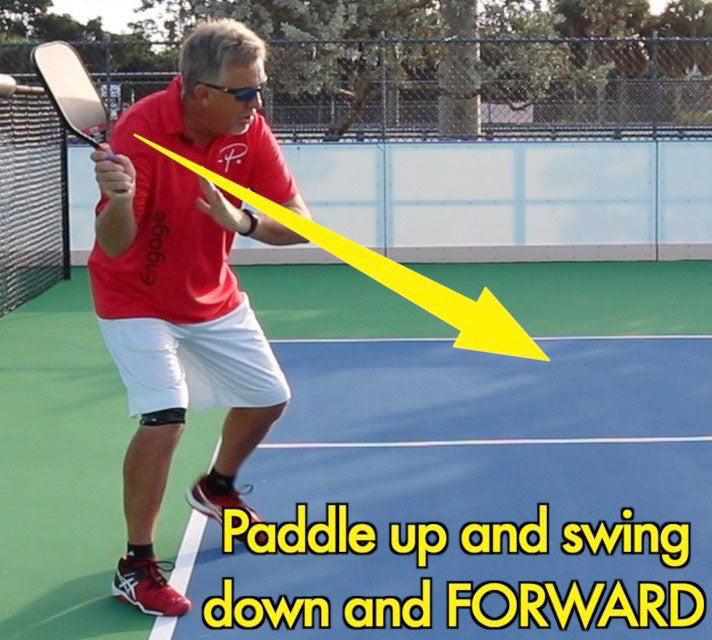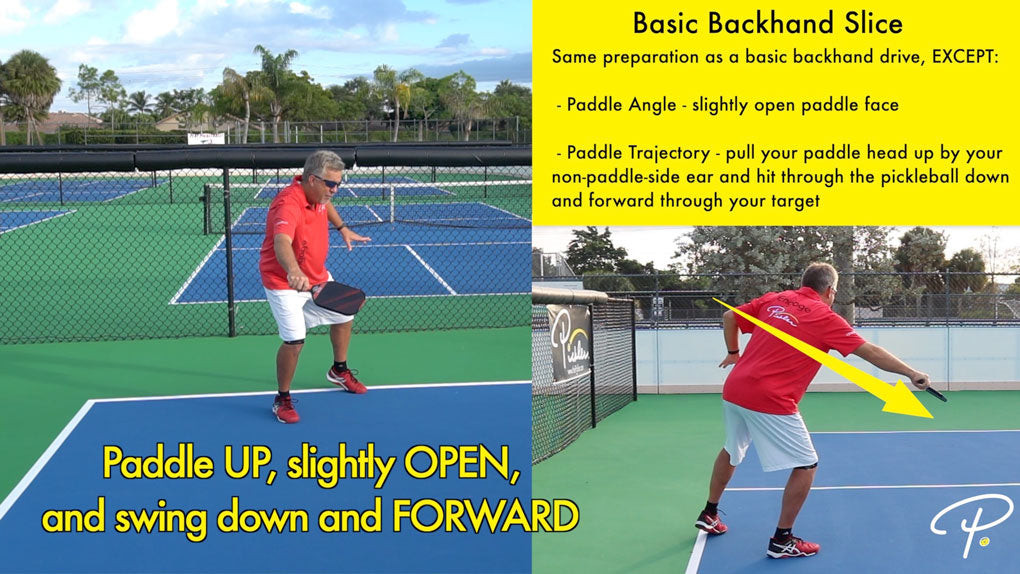Pickleball is a game of finesse and strategy, and mastering a variety of shots is key to dominating the court. Among these, the cut serve, also known as a slice serve, is a powerful technique that can significantly enhance your game. The beauty of a pickleball slice serve lies in its backspin, a rotational force applied to the ball causing it to spin from 6 o’clock to 12 o’clock back towards you upon contact. This backspin, whether applied with a forehand or backhand motion, makes the cut serve in pickleball an invaluable asset, particularly for your serve and even dinks near the Kitchen line.
Why is learning to Hit A Cut Serve In Pickleball so beneficial? Here’s why incorporating a slice into your pickleball serves can give you the edge:
- Buys You Time: The backspin imparted on a slice serve causes the pickleball to travel through the air at a slightly slower pace than a flat serve. This extra air time gives you precious moments to advance to the Kitchen line and establish a strong court position after serving.
- Keeps the Ball Low: A well-executed slice serve tends to stay low after bouncing. This low trajectory is crucial for preventing your opponents from launching an aggressive attack, as it forces them to hit up on the ball.
- Introduces Uncertainty: The spin on a pickleball cut serve can be a real headache for your opponents. The unpredictable spin can cause the ball to slide or skid upon contact with their paddle, making it harder for them to return effectively and consistently.
Ready to elevate your serve game? Here are 4 essential tips to help you hit a cut serve in pickleball with precision and effectiveness:
- Elevate Your Paddle Head Position: For a standard flat serve, the goal is typically to keep your paddle head around waist level, maintaining a level plane throughout your swing. However, to generate backspin for a cut serve, you need to start with your paddle head higher, near your ear. This principle applies whether you’re executing a forehand or backhand slice serve. Positioning your paddle head high is crucial because it sets up the necessary downward and forward motion needed to impart backspin on the pickleball. You’ll be swinging down and forward through the ball at an angle to create that spin. Get that paddle head up by your ear to start!
 A player demonstrates the high paddle head position for a forehand slice serve in pickleball, with the paddle near their ear.
A player demonstrates the high paddle head position for a forehand slice serve in pickleball, with the paddle near their ear.
-
Employ an Open Paddle Face: While a flat serve utilizes a square paddle face, the cut serve demands a slightly open paddle face, angled upwards towards the sky, think around a 45-degree angle. This open paddle face, combined with the high-to-low swing path, is the magic formula for generating backspin on your pickleball slice serve. However, it’s important to find the right balance. Be cautious not to open your paddle face excessively, as this can cause the pickleball to float too much, potentially sending your serve long and out of bounds.
-
Maintain a Controlled Swing Trajectory: Consistency is king in pickleball, and your cut serve is no exception. Like other shots, a controlled and compact swing is key. Use a short backswing, bringing your paddle back only to your ear. Make contact with the pickleball out in front of your body. Avoid the common mistake of pulling your paddle across your body, chopping downwards abruptly, or halting your swing. Instead, visualize swinging your paddle from your ear in a smooth, straight line down and forward towards your intended target. Execute one fluid, controlled motion. For added balance during your serve, extend your non-paddle arm in the opposite direction of your swing, helping you maintain stability and control.
 A player demonstrates the swing path for a backhand slice serve in pickleball, showing a controlled and forward motion.
A player demonstrates the swing path for a backhand slice serve in pickleball, showing a controlled and forward motion.
- Follow Through with Your Serve: Don’t stop at contact! Immediately after hitting the cut serve, allow your feet and body to follow the direction of your shot. This follow-through is vital for generating power and momentum behind your serve, ensuring it has sufficient pace and depth. Furthermore, following through naturally puts you in a better position to recover quickly and prepare for your opponent’s return shot.
Incorporate these pickleball tips into your practice sessions and you’ll be well on your way to mastering the cut serve in pickleball. This shot will become a valuable weapon in your arsenal, particularly on your serves and even when executing dinks. Start practicing your pickleball slice serve today and watch your game reach new heights!

